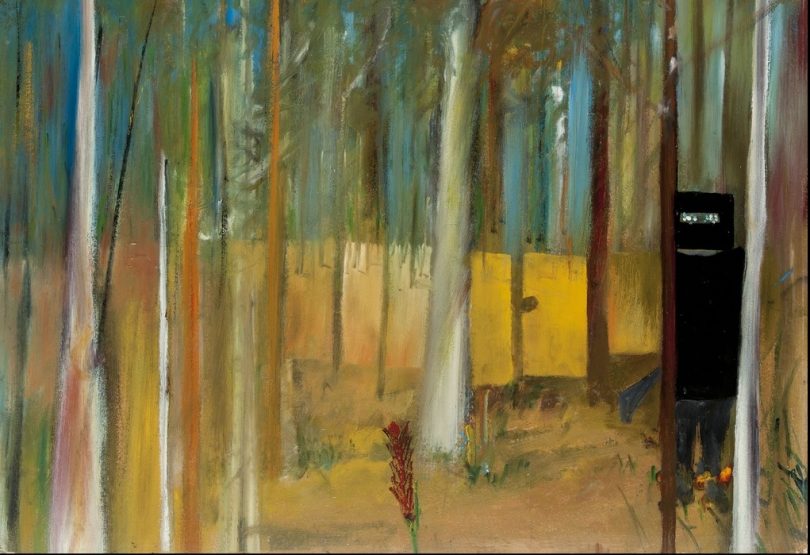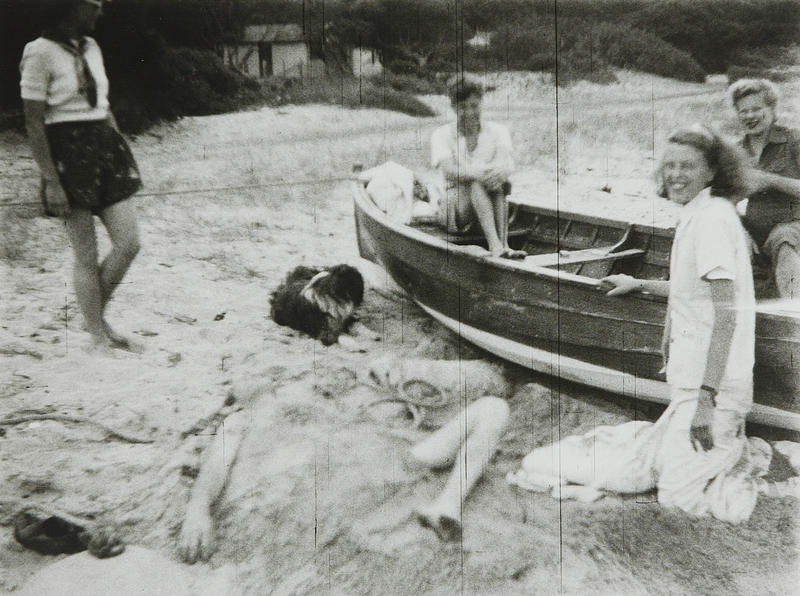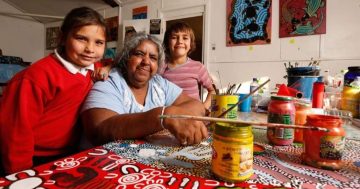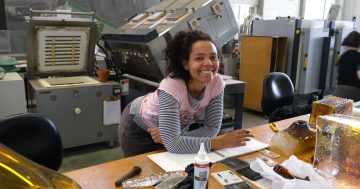
Kelly in Bush, 1945, Sidney Nolan. Image: Supplied.
He was one of the towering greats of the Australian art world, a household name for a generation, and Canberra has perhaps the most significant collections of his iconic art – but how well do we really know Sidney Nolan?
That’s the question Canberra Museum and Gallery curator Virginia Rigney asked herself when faced with the task of re-hanging Canberra’s luminous Nolan collection, formally presented to the ACT in 1975 as a gift to the nation by the artist.
In the early 70’s, Nolan fell in love with historic Lanyon Homestead and its superb site on the Murrumbidgee, flanked by the deep blue ranges of the Brindabellas and the works were initially hung in a dedicated space there. He continued to visit and add to the collection until his own death in 1992.
But when the 2003 bushfires swept perilously close to Lanyon and its precious cargo, the risks to a significant piece of Australian cultural history were seen in a worrying new light. The decision was taken to transfer the collection to CMAG in the city’s heart.
Recently, Arts Minister Gordon Ramsay opened a new permanent, but flexible, home for the Nolan paintings in the upstairs gallery at CMAG.
There are major paintings from the Ned Kelly series, broadening our understanding of the works at the National Gallery. There are works reflecting Nolan’s journeys deep into the Australian wilderness, but also a key collection of photos in the Connections and Threads exhibition that speak to the emotional high wire act from which much powerful early work emerged.
As a very young man, he met wealthy art patrons John and Sunday Reed. They drew Nolan into a group of friends who gathered at their home, Heide, on the outskirts of Melbourne. A passionate affair with Sunday Reed ensued, and friendships with the likes of literary critic Max Harris, painter Albert Tucker and his wife Joy Hester. A crucible for Australian modernism emerged.
“The photos of Sidney with John and Sunday and the Heide circle tell a story about the intimacy and intensity of the time,” Rigney says.
“In the last decade or so more of their letters have come out and we have a deeper understanding of how powerfully influential these relationships were for Nolan.”

Sidney Nolan buried in the sand at Sorrento with Sunday Reed at boat c 1945. Image: Supplied.
“He evolved very quickly through those eight years. He was at the point in his life when you know you want to say something and do something urgently, when you find a story that you want to tell.”
The challenge of re-hanging the CMAG collection evolved into a layered approach to Nolan’s personal life, the power of his artworks and the turning point he represented in post-war Australian modernism.
“The Ned Kelly paintings are about Nolan’s own life too. It’s not a laboured, careful narrative, he’s being playful with the Kelly history.
“I think this exhibition gives people a way of getting into his headspace,” Rigney says.
At the exhibition’s opening, Arts Minister Gordon Ramsay noted the pivotal role the artist played in transforming how we understand our landscape and ourselves.
“As you move through the Kelly series, you will notice how Nolan was rejecting the traditional Australian landscape artists of the past, inserting the stark, stylised figure of the bushranger into the landscape, and layering his own personal and family history into the story,” he said.
There are 54 Kelly series works divided between CMAG and the National Gallery. Nolan revisited the Kelly theme in the 60s and Rigney points out that much of the complex history of the paintings is still being brought to light.
“Nolan also goes into Western Australia and the Central Desert, and he engages there very directly with Aboriginal people. He calls us all barbarians at the gates as he considers the impact of European settlement.
“Though he sometimes responds in a way that might seem unlikely for a white artist today, he shows a lot of awareness and sensitivity. It’s an intelligent gaze.”
There are plans to engage with schools across the region and Rigney points out that Canberra could become a cultural tourist venue for Nolan fans since there are also major works at the ANU and the National Library.
The exhibition itself will change shape on a regular basis with potential loans and explorations of different aspects of Nolan’s life and place in art history.
“This is the curatorial gift that keeps giving – and I am so thrilled to start this journey,” Rigney says.
The Nolan exhibition is now on permanent display at Canberra Museum and Gallery. The entire CMAG Nolan collection can also be seen online.
Original Article published by Genevieve Jacobs on The RiotACT.
















